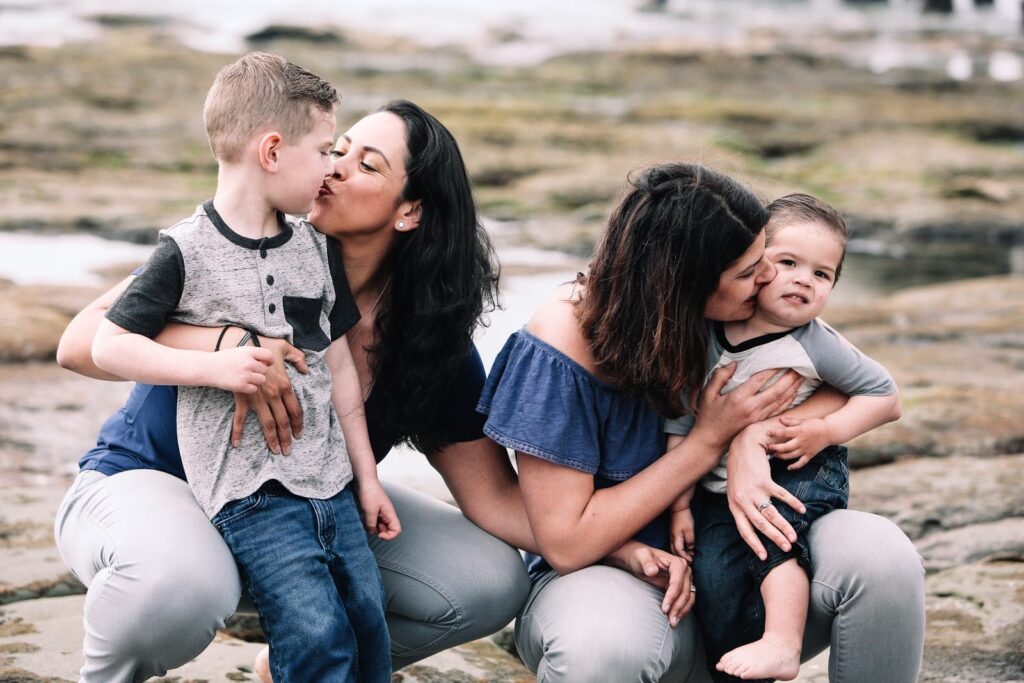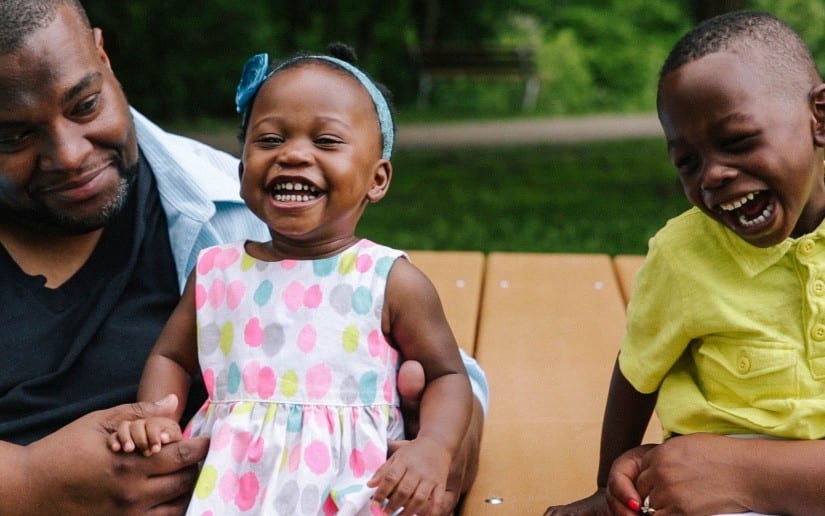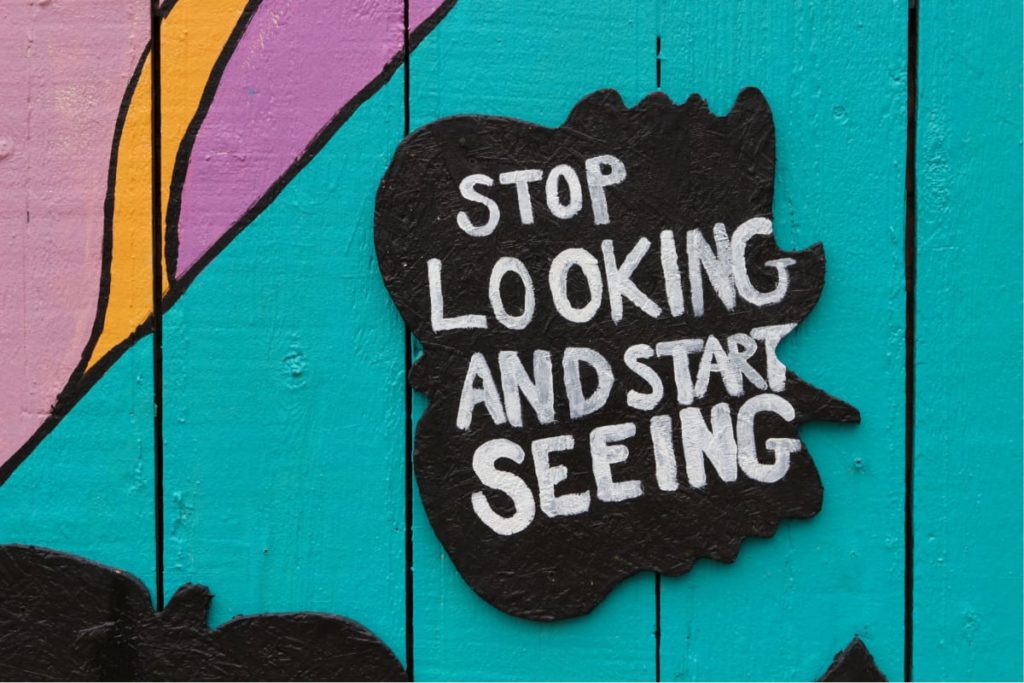Our job at Wayward Kind is to create images, write copy, develop websites, promote our client’s products and services. Underlying how we create these products, is our lived experiences, our conceptions, our ideologies. Inherent in choice is explicit bias, but so often our work is more an expression of our implicit biases.
Implicit bias is preferential treatment, attitudes on associations we have and make, and perpetuation of stereotypes. It’s our unconscious, biased, conception of people, places, objects and what they communicate externally through associations formed by society. These associations are formed and solidified when we see images of, or read of, people and places, and the context of their placement.
Marketing is storytelling. A process by which we help articulate and express the stories of our clients. It is important to us through our brand strategies, content marketing, and more that the commentary of your service reflects the heterogeneity of our clients and consumers. Our liberating content is produced in conversation with our implicit biases, with serious consideration from our entire team, and tangible oversight mechanisms to keep our implicit biases in check.
Why does implicit bias matter for marketers?
You’ve chosen this image to display on your family law center client’s website.
 It’s of a heteronormative couple, the “traditional,” the nuclear, family for their homepage. Of course, this is a family. But family looks like this:
It’s of a heteronormative couple, the “traditional,” the nuclear, family for their homepage. Of course, this is a family. But family looks like this:
 This too:
This too:
 Who are we to determine the notion of family? It’s just an image!
Who are we to determine the notion of family? It’s just an image!
Let’s start with this: it’s not just an image. Images are symbols. And images affect our understanding of the world.
The intention of a photo choice may not have been exclusionary, but the image visually exemplifies and defines family. These unconscious choices are affirmations of, and solidifications of the lifetime of exposure of what is and isn’t accepted in cultural attitudes on gender, race, age, ethnicity, religion, economic class, sexuality, disability, nationality.
There are a plethora of examples like this across digital and print media. Media plays an imperative role in the visualization of norms, in the visual representation of ideas. Yielded to it, is an immense power and responsibility to either affirm or erase negative attitudes and stereotypes in society.
As a business, the choices your marketing team makes as to the visual and written expression of your company, your products, and your services are imperative to enticing potential clientele. Research has shown that selective images and language may reduce accessibility of services. The image choice of the family law center may deter couples in a wide array of family arrangements, from seeking this family’s law center because they couldn’t see themselves included in the service.
Anne Miles, the managing director of International Creative Services, spoke on this to CMO and said the “marketing and advertising creative is such a big part of what consumers see every day. Reflecting society and shaping is both happening, but we have control over it and if we take charge we can impact society in a positive way.”
It’s important that who you hire, fundamentally understands this phenomenon. At Wayward Kind, we’ve been working on actionable means to help us confront our implicit biases in order to create more inclusive and better content.
Four steps to creating more equitable content
Hiring
If you want your content to be inclusive, the sociocultural depth of the message, image, website, advertisement, social media post begins with who is in the room.
Who is at the table and whose voices are being heard are two of the most important facets of generating more inclusive content. Building a more inclusive team is a start, but what voices are amplified by the variety of power structures in your workplace need to be examined too. Diversity is only meaningful when a diversity of perspectives are equitably represented.
Oversight mechanisms
Desiree Adaway says, “transparency allows you to build trust.” By instituting oversight mechanisms in our content creation process such as an inclusive content checklist or bias check, we have daily discussions about the nature of our content.
An inclusive content checklist or bias check takes the form in questions to consider about an image or copy produced. Such as, “is the copy free from gendered language” or “in my SEO terms, what vernacular am I assuming the reader possesses?” or “what does this image overtly include and overtly exclude?” It’s imperative that you have a content partner like Wayward Kind to address this in their work, to help you navigate your audience.
To begin cultivating a more inclusive workspace and content, your company could institute communication guidelines on inclusive language around ability and gender; another communication practice could be thinking before speaking. Implicit bias thrives in an unconscious manner, therefore consciousness exercises before speaking and publishing could help weed your content of implicit biases.
The goal with oversight mechanisms is to institute checks and balances to the development process to ensure content isn’t just created in an unconscious manner, and published without consideration of inclusivity.
Education
Before we endeavor on some form of diversity and inclusion training, we have to know where we each are in understanding what diversity and inclusion are.
One activity to measure your implicit biases is through self-assessment. Harvard has implicit association testing about a vast array of topics. Love Has No Labels provides you with questions to examine and reflect on your implicit biases. As an organization, Love Has No Labels also provides questions to connect as a team on this topic.
You could subscribe yourself and or the whole team to Anti-Racism Daily. As a company, you would have access to daily newsletters with commentary and analysis on what is happening in the world that is upholding systemic oppression, a weekly discussion guide on reflection questions for your team, and a monthly report with anonymized feedback on your team’s participation – including a summary of open rates and actions taken.
There are so many wonderful people of color and LGBTQ+ creative social media accounts that address prejudice, anti-racism, inclusivity, and much more. As creatives, maybe part of your team meetings is sharing these social media pages with one another, or make it part of your marketing to amplify marginalized voices.
Internal Audits and Training
A great medium to create accountability in addressing the problems implicit bias has on your marketing, is for companies to incorporate unconscious bias training into the workplace. Maybe what is right for your company is hiring an external consultant. We have the immense privilege of working with so many experts in this space. Check out the Adaway Group, Every Level Leadership, and Nicole Lee for how their services can serve you.
A consultant can help audit your content creation process, address gaps in oversight and decision-making, provide strategic advice on amplifying marginalized voices in leadership roles. An outside perspective could better help you and your team understand the actions and decisions needed specific to your company, to yield the inclusive content you are striving for.
Impact Starts With You
There is no singular solution for creating more inclusive content. Wayward Kind is here to help you on your journey to reshaping your marketing, to align with liberation and inclusivity. We can help with your content marketing, brand strategy, and more. Let us know how we can support you.





